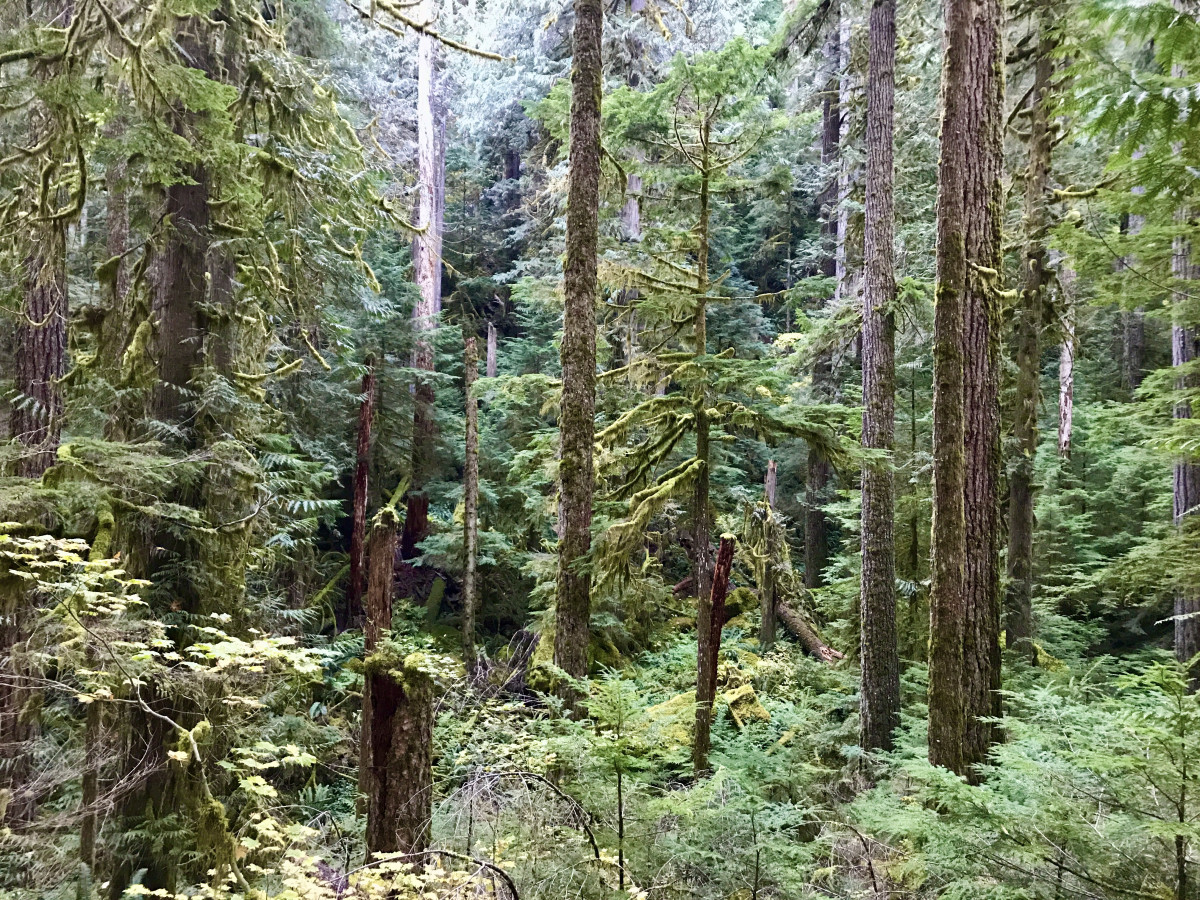About Forests

Forests are fundamentally important biomes for planet earth. In this upper division science program, we will learn to see the forest, the trees, the mosses and lichens by studying approaches to measuring and understanding Pacific Northwest forests. Students will learn: quantitative approaches and tools in forest measurements; foundational concepts in forest ecology and interactions among forest organisms; major biomes, and community types in forests of the northwest; field methods for assessing biodiversity of plants (including bryophytes) and lichens, along with developing laboratory skills for identifying bryophytes and lichens using microscopes and dichotomous keys. We will also hold a weekly seminar on books that address human interactions with forests, and especially in the Northwest. The texts will cover forest ecology concepts, forest science, environmental history of Pacific Northwest forests, and global issues in forest management and conservation
This program will also include weekly field days where we will use local forests and The Evergreen State College Ecological Observation Network (EEON), an experimental forest plot network, to refine skills in measuring forests and detecting change using long-term data in forest ecosystems. Finally, a series of labs in the use of GIS in forest sciences will survey current use of remote sensing in forest ecology and teach students basic skills for navigating and interpreting GIS data in forest ecology.
Field skills, reading and analyzing scientific papers, technical writing, quantitative skills, work with common computer software, and presentation/communication skills will all be emphasized.
What books will we need? Books (available from the Greener Bookstore):
- Common Mosses of Oregon and Washington, by Bruce McCune and Martin Hutten
- Macrolichens of the PNW, 2nd edition, by Bruce McCune and Linda Geiser
- Forest Ecosystems, Perry, Hart, and Oren
- Free Open Ebook: Forest Measurements; An Applied Approach, by Joan DeYoung: https://openoregon.pressbooks.pub/forestmeasurements/
- Seminar Texts (List represents most probably seminar texts – in order of reading. List will be finalized by early June):
- The Hidden Forest: The Biography of an Ecosystem, by Jon R. Luoma
- Entangled Life: How Fungi Make our Worlds, Change our Minds and Shape our Futures, by Merlin Sheldrake
- Finding the Mother Tree: Discovering the Wisdom of the Forest, by Suzanne Simard
- Additional articles from the primary scientific literature will be assigned weekly and available via the program Canvas site
What about field gear? Students will need basic personal field gear that will be listed in a separate handout. Gear needed will include appropriate rain gear, field-books, and individual tree measurement gear (DBH tapes and meter tapes) that will be available to check-out through the program. Additionally, students will need technology to remotely access course content. Here is a link to field gear needs: Gear for Forests
I like trees, but what about Technology? We will have a lot of hands-on activities and field labs, but remote access to lectures and course content will also be critical. To successfully participate in this program, students will need a home computer, laptop, Chromebook, or iPad. Contact faculty for help if this is an obstacle – really, we can help! The program will include options for in-person video conferencing (approximately two-three hours per week), and multiple options using online technology for lecture content, group work, and coursework. Examples of remote technology that will be used include Zoom, Canvas, YouTube, iNaturalist, Google platforms, Excel, ArcGIS Online, Google Earth Engine, and Forest Visualization Software.
Credits: Upper-division science credit may be awarded in the following five credit equivalencies upon successful completion of the program objectives.
*2-Forest Ecology Seminar
*4-Bryophyte and Lichen Ecology
*3-Bryophyte and Lichen Taxonomy
*3-Remote Sensing and GIS for Forest Resources
*4- Forest Ecology and Applied Forest Measurements